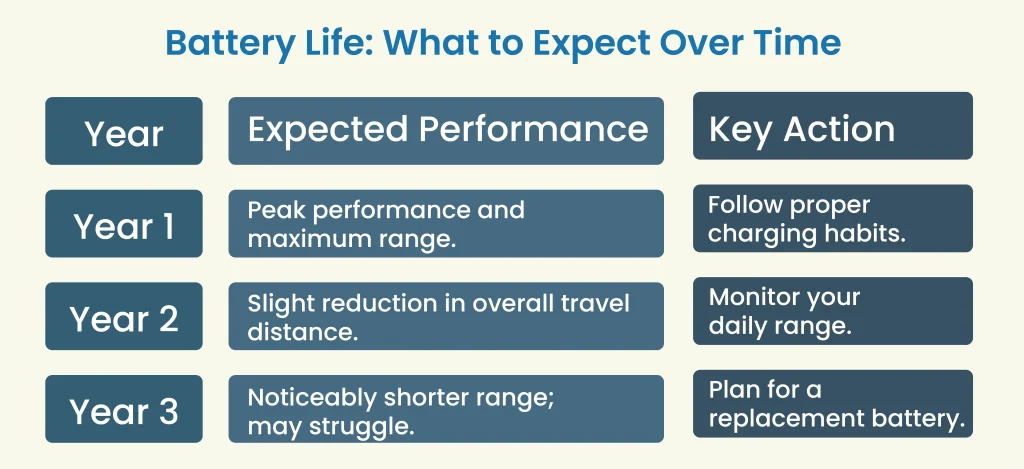Your electric wheelchair provides essential freedom. This freedom relies completely on its power source. Proper wheelchair battery care ensures reliable performance. Neglect leads to unexpected breakdowns and frustration. Understanding basic maintenance is surprisingly simple. This knowledge protects your independence and investment. Follow these practical steps for optimal results.
Understanding Your Wheelchair Battery Type
Most power wheelchair models has specific batteries. Sealed Lead Acid batteries are common among them. They are known for their reliability & affordability. Gel and AGM are popular Sealed Lead Acid varieties. These modern versions are completely spill-proof. They require almost no routine maintenance.
Lithium-ion batteries represent newer technology. You often find them in advanced automatic wheelchair designs. These batteries are significantly lighter than older types. They also achieve a full charge much faster. Their overall lifespan generally exceeds other options. The initial wheelchair battery cost is higher however.
Always confirm your specific battery model. Your owner’s manual contains this vital information. Correct identification guides proper care procedures. Using wrong methods can cause permanent damage.
Establishing an Effective Charging Routine
Good charging habits longer battery health. They directly impact your daily travel range. An incorrect approach shortens battery life considerably.
Only use manufacturer’s original charger. Other chargers may deliver improper voltage. This mismatch slowly degrades battery components. First plug the charger into the socket. Then connect it to your wheelchair. This sequence prevents potential electrical arcing.
Charge your mobility aid in a temperate location. Avoid excessive hot or cold environments. High heat is particularly harmful for battery. A moderate and dry room offers the ideal conditions.
Allow the battery to complete its charging cycle. Most chargers indicate a full charge with a light. Avoid interrupting this process regularly. A complete cycle maintains cell balance.
Daily and Weekly Maintenance Schedules
Your daily routine depends on personal usage patterns. Regular use demands a nightly recharge. Do not wait for the battery to fully deplete. Deep discharges cause unnecessary strain.
Replenish the charge after daily activities. This practice is called topping off. It keeps the power cells in an optimal state. Modern batteries do not develop memory effect. Frequent charging will not harm them.
Infrequent use requires a different strategy. All batteries gradually lose charge when stored. This natural process is called self-discharge.
Perform a weekly power level inspection. Recharge the battery if it falls below half capacity. Consistent voltage maintenance prevents deep discharge. Your battery will deliver more reliable service.
Long-Term Preservation Strategies
Think beyond immediate daily needs. Long-term care significantly extends service life. Simple consistent practices offer great rewards. Maintain clean battery terminals. Examine them during weekly checks. Watch for corrosive white or bluish powder. Wipe any residue away with a dry cloth. Always power down the system before cleaning.
Plan for extended storage periods. A fully charged battery survives storage best. Check its status every two or three weeks. Provide power before it drops too low.
Respect your equipment’s weight limits. Overloading strains the motor and electrical system. The wheelchair battery must then provide extra energy. This excessive demand shortens its functional lifespan.
Notice performance changes in your adaptive equipment. A sudden reduction in travel distance signals trouble. The battery may be approaching its replacement time.

Troubleshooting Common Power Issues
Even excellent care cannot prevent all problems. Recognizing common issues helps you respond correctly.
A battery that refuses to charge is frustrating. First verify your power source is active. Test the wall outlet with another device. Then inspect all cable connections thoroughly. Ensure every plug sits securely in its port.
Reduced operational range is another frequent complaint. Your journeys become shorter on a full charge. This often indicates natural aging. All batteries lose capacity over years. Replacement may become necessary.
Rapid power depletion needs investigation. Analyze your recent travel routes first. Rough terrain and hills demand more energy. New usage patterns might explain the change. Persistent problems require professional assessment.
Physical damage demands immediate action. Look for cracks or leaks on the battery case. Never use a compromised battery. It presents serious safety risks. Contact your equipment supplier promptly.
Recognizing Replacement Signals
Every wheelchair battery has a finite lifespan. Timely recognition of failure ensures safety. It also guarantees smoother mobility.
Most batteries last for around 1-3 years. Your specific experience will vary. Care quality and usage intensity are major factors. Meticulous maintenance can extend this period.
The clearest sign is consistently reduced range. You cannot complete regular daily trips. The battery exhausts itself too quickly. It no longer holds a sufficient charge.
Erratic performance also indicates serious problems. The power gauge drops inconsistently during operation. The chair might jerk or lose power suddenly. These behaviors suggest a failing power source.
Plan replacement before a total breakdown occurs. Get a new battery from a reputable supplier. Confirm its compatibility with your model. Your supplier can guide you best about that.
Essential Safety Protocols
Safety must govern all battery interactions. Electricity and chemical energy demand respect.
Always switch off the power wheelchair before connecting. Disconnect the charger after reaching full capacity. Avoid indefinite connection to the power source. Overcharging can damage certain battery types.
Never attempt to open a sealed battery unit. Internal substances are hazardous. You risk acid exposure and severe injury. Leave intricate repairs to qualified technicians.
Keep batteries away from open fire. Prevent metal objects from touching the terminals. Such contact can create a dangerous short circuit.
Dispose of old batteries through proper channels. Never place them in regular household trash. They contain toxic and environmentally harmful materials. Many retailers offer battery return programs.
Conclusion: Secure Your Daily Independence
Your motorized wheelchair is a crucial mobility aid. Its battery provides the freedom you rely on. Correct charging and maintenance are straightforward. These practices ensure dependable performance for years.
Adopt the fundamental routines described here. Recharge properly after daily use. Conduct simple weekly inspections. Learn the symptoms of battery aging.
This understanding gives you personal control. You become the master of your mobility. Your automatic wheelchair will remain a trusted companion. It will support your active life without interruption. Your independence depends on a dependable power supply. Protect it with consistent and knowledgeable care.
FAQs
When should I change my wheelchair battery?
Replace when your travel range decreases significantly. Erratic power delivery also signals need for replacement.
Why my wheelchair battery is draining so fast?
Check for rough terrain use or overweight loads. Old batteries lose capacity with the passage of time.
How do I clean my wheelchair battery?
Use a dry cloth to wipe terminals monthly. Don’t forget to power off the equipment first.
How often should I charge my wheelchair battery?
Charge it after daily use. Avoid letting it drain completely. Also, avoid charging multiple times in a day.
What’s the best way to charge electric wheelchair?
Only use the original charger. First, plug the charger into the wall. Then, connect it to your chair.


